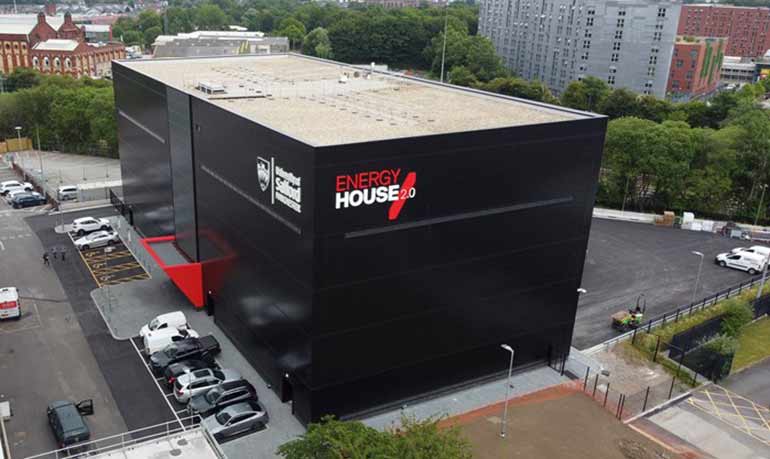Roof-mounted heat pumps on trial
7th December 2022
UK: Bellway, one of the UK’s largest housebuilders, is trialling a roof-mounted air-source heat pump, developed in the Netherlands, at an experimental eco house at the University of Salford.
The roof-mounted HydroTop air-source heat pump offers a new way to incorporate low-carbon technology into homes by placing the 200kg air source heat pump within the loft space.
The HydroTop has been developed and manufactured by Deventer-based HydrotopWorks BV and is supplied in the UK to Bellway by Worcester Bosch.
Suitable both for new and existing buildings, the HydroTop takes up little space and is said to integrate seamlessly into the roof of the house. Installed through an opening in the roof, as if it were a skylight, the “outdoor” unit protrudes just 15cm above the roof. Completely prefabricated, it is said to be quick and easy to install, with all service and maintenance being carried out from the inside.

“Installing an air-source heat pump within a loft space is a bold move – one that no UK developer or retrofit project has previously attempted,” said Bellway’s group technical and innovations manager Jamie Bursnell.
The Future Home is being built by Bellway inside a climate-controlled chamber at Salford university as part of its £16m Energy House 2.0 research project, which is being part-funded by the European Regional Development Fund. The home will test low-carbon technologies and their impact on the cost of living.
“During the research period we will have people living within the home to test the performance of the heat pump during real-life use,” Bursnell added. “If the unit in the loft performs well, it could create a new way for homeowners to reduce their carbon footprint without compromising on space or aesthetics.”

Darran Burrage, UK new build director at Worcester Bosch, said: “One barrier for existing properties to convert to a heat pump is size and location. By placing an air-source heat pump in the loft of The Future Home, the trial will hopefully pave the way for an alternative location and if successful enable more homeowners to see the technology as a viable greener heating alternative in the future.”
The Future Home will also test underfloor and infrared heating, as well as a host of low-carbon innovations. These include mechanical ventilation, double versus triple glazing, battery storage for solar energy and a shower which transfers heat from wastewater to warm the incoming mains supply.








